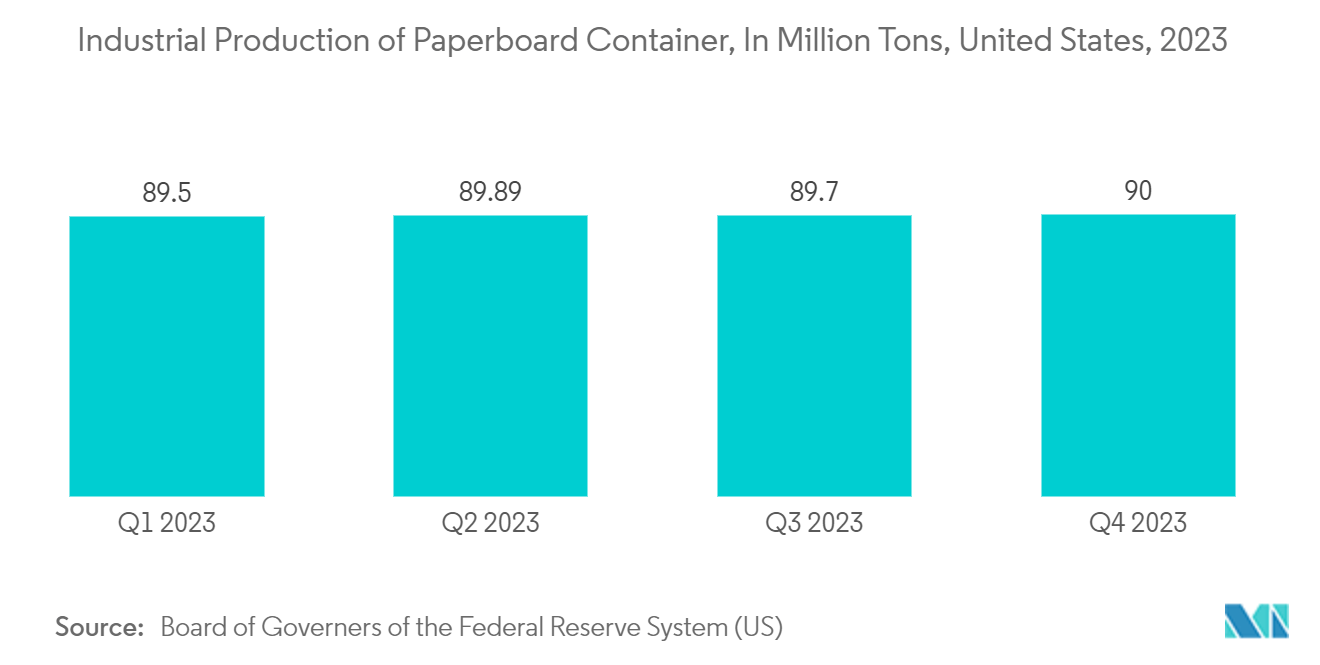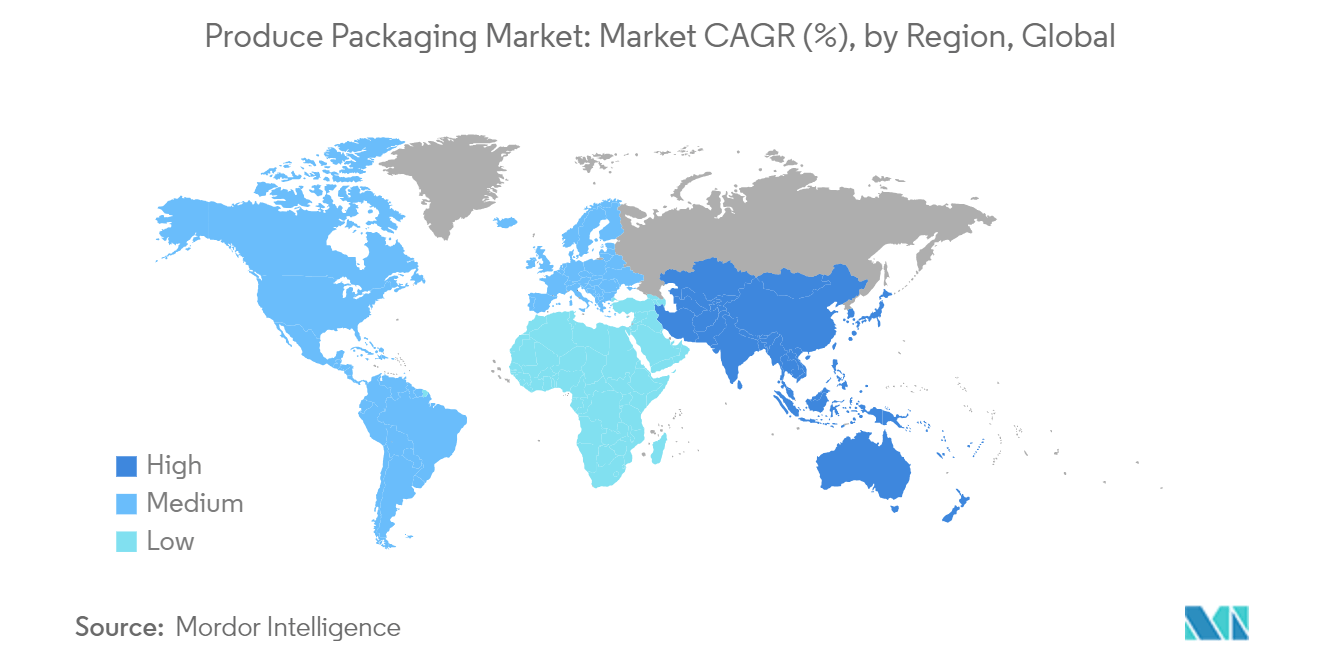Market Trends of Produce Packaging Industry
Corrugated Boxes as a Packaging Material Type May Register a Significant Share in the Market
- Corrugated boxes consist of two paper liners glued to a corrugated inner 'fluting,' forming connected arches for added strength. These boxes are versatile, as the corrugated board can be tailored to create custom containers, with printing options varying based on design and production scale. Corrugated boxes are primarily used for fresh produce and offer ventilation, moisture resistance, and protective qualities.
- These boxes are not just about functionality. They are designed to enhance protection and optimize shipping efficiency, thus bolstering their demand. Corrugated boxes can be tailored in shape, size, and style to meet diverse product needs. The paper components used in their construction are food-safe, ensuring product integrity.
- Leading providers in the market, like Amcor Group and Thimm Group, specialize in manufacturing recyclable corrugated cardboard. With its high recycling rate, this eco-friendly material is a sustainable alternative to plastic. These cardboard solutions also offer flexibility, allowing for tailored printing and coating options.
- The growing demand for produce packaging in North America expands the need for paper and paperboard material to make corrugated boxes and containers. According to data by the Board of Governors of the Federal Reserve System (United States), paperboard container manufacturing in the United States was at 89.50 million ton in Q1 2023 and reached 90 million tons in Q4 2023. Additionally, stringent government regulations for plastic packaging boost the demand for corrugated packaging globally.

Asia-Pacific to Witness Significant Growth in the Market
- Asia-Pacific is expected to account for a significant market share due to increased packaging demand for produce items such as apples, pears, and sweet potatoes and the rising demand for cut and shredded produce that uses convenience packaging.
- In Asia-Pacific, shifting consumer behavior is creating demand for fresh produce packaging. Fresh produce is sold in various forms of packaging in the region, including pouches, bags, and rigid plastic containers, as well as more intensive packaging that provides ease of use, convenience, superior performance, and improved shelf-life and environmental footprint.
- Asian countries, including China, India, Japan, and South Korea, have a growing interest in organic vegetable and fruit production. Additionally, according to data from the Food and Agriculture Organization in the United States (FAO), 99% of tropical fruit production is from Asia-Pacific and Latin America, thus propelling the exports of fresh tropical fruits and boosting the demand for produce packaging.
- According to the Agricultural and Processed Food Products Export Development Authority (APEDA), India is the second-largest producer of fruits and vegetables after China, providing the former with ample export opportunities. During 2022-2023, India exported USD 1,635.95 million worth of fresh fruits and vegetables.


